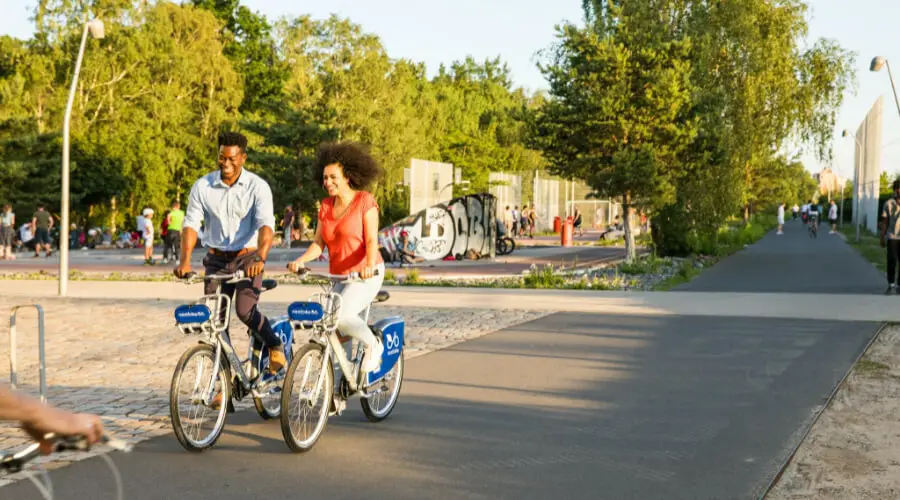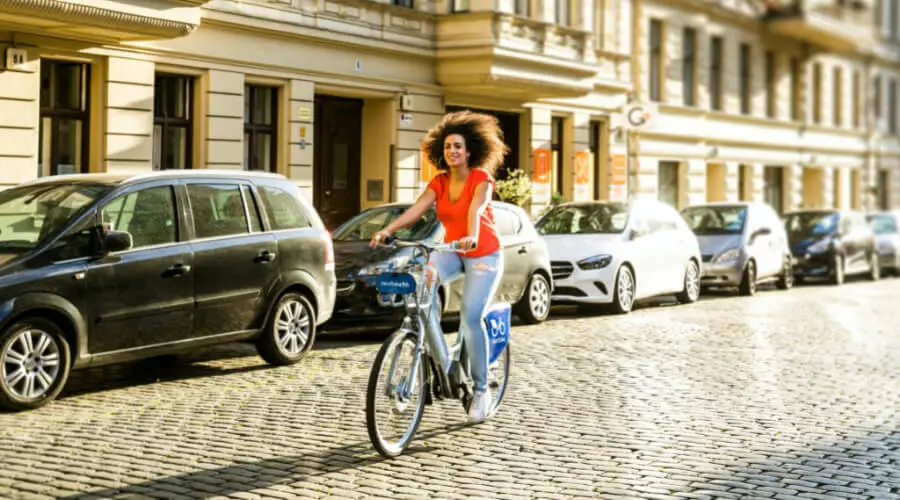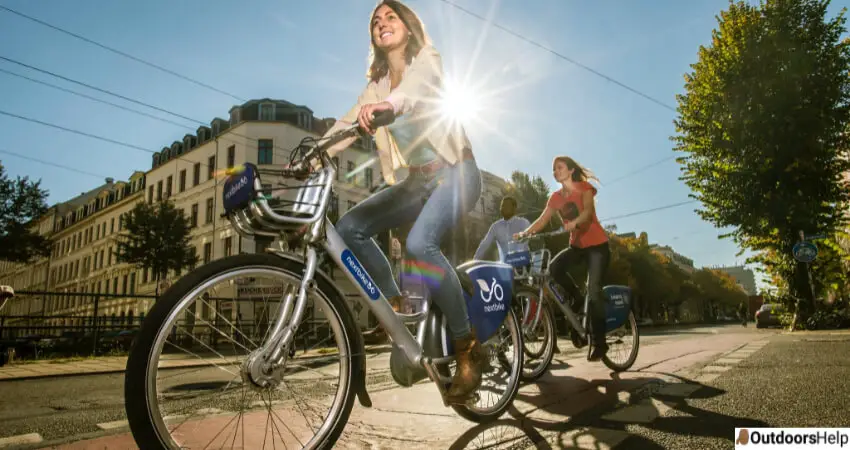The amount of time it takes to learn to ride a bike varies from individual to individual. Kids are the fastest to learn biking skills. Unlike cautious adults, the young ones are always ready to explore new territories, riding being one of them. Averagely, a kid will take 45-120 minutes to learn the basics of riding. On the other hand, an adult takes an average of 2-3 days to learn to ride a bike. The average time may vary depending on both the trainee and trainer.
How Do I Learn Riding A Bike?

Learning to ride is a gradual process that is taken step by step. A sizeable number of adults never got an opportunity to learn bike riding while kids believe it is impossible to ride. However, this is far from the truth. Contrary to the opinion, teaching an adult to ride is neither embarrassing nor complicated. All you need is a working bike, open space, a learning attitude, and patience.
Learning To Ride A Bike Step By Step
Whether an adult or a kid, learning to ride a bike is not a demanding task. All that is required is self-belief, and you will grasp bike riding within the shortest time possible. The steps highlighted below to will guide the trainer and the trainee intending to accomplish the learning process.
1. Plan The Learning Sessions
Learning sessions should be planned to the learner’s convenience. The duration of each session hinges on the learner’s ability, but we recommend 40-60 minute sessions. Fast learners will surprise you by riding successfully in the first session. However, this is not the case for everyone. Observe the learner keenly and end the session immediately when progress is achieved. If you wait for long, the rider might be exhausted or frustrated, leading to discouragement.
2. Check The Training Bike
The training bike should be in good condition. Before you embark on the training, check to ensure that it is working correctly. Tires should be examined for wear and tear, and pressure should be balanced accordingly. Adjust and secure the handlebars and the saddle properly. It is also vital to make sure the chain is oiled and brake levers are working. All adjustments done on the bike should be to the comfort of the rider.
3. Identify The Training Area
Choose a training area that has minimal traffic. Learning to ride in a busy area doesn’t augur well due to pedestrians or other cyclists clogging up the training path. A secluded location works well for new riders since they avoid intimidation from the masses.
Another option for starters is paved and grassy areas featuring slight slopes. If the site is grassy, ensure the grass is short. Whereas short grass provides a soft landing, long grasses offer much friction that makes pedaling strenuous. Areas with slight slopes help riders to grasp gliding at the earlier learning stage.
4. Find The Right Gear
New riders are prone to mistakes. So before embarking on the training, ensure the rider is outfitted with the right safety gear and clothing. The safety gear includes the helmet, gloves, knee pads, and elbow pads.
Precaution should be taken by having the rider tie the shoe races tightly. Pant legs also need to be cuffed to avoid coming into contact with the chain.
Finding Balance For New Riders

Balancing is the secret behind successful riding. The first step of learning to ride a bike is by finding balance. Remember that if you lose balance, you fall. Below are steps that need to be followed to gain the bike’s balance for new riders;
1. Seat Adjustment
The seating position should be adjusted to allow riders to put their feet on the ground. If, after adjustment, the feet remain hanging, go for a smaller bike. A bigger or smaller size of bike poses riding difficulties to new riders. While seated, the handlebars and brake levers should be within easy reach of the rider.
2. Disengage Pedals
Removing pedals will enable new riders to discover their balance through gliding.
3. Practice Mounting And Unmounting From The Bike
The new rider should practice getting on and off the bike several times until satisfied that the process has been mastered. When getting on and off the bike, brakes need to be applied to eliminate wobbling. The act of mounting and dismounting from the bike gives new riders a comfortable feeling with the bike.
4. Practice Braking
Mastering how the bike brakes give novice riders riding confidence. The easiest way for a novice rider to understand how braking works is by pushing the bike while walking alongside and practice applying the brakes. It is advisable to apply uniform pressure to both brake levers.
5. Practice Gliding
Gliding involves pushing the bike forward using your feet. Novice riders need to start with gliding to master the art of balancing on the two wheels. Practicing gliding on a slight slope helps to build momentum and master balancing.
Gliding should be practiced until the rider attains balance and can glide without the feet touching the ground.
After gliding satisfactorily, reattach the pedals and attempt pedaling. Focus ahead, master balancing, and you are almost done. Now that balancing has been achieved practice negotiating corners and the use of brakes. If you have gotten a grasp of all this, you have mastered the basics of bike riding.
Why Learn To Ride A Bike?
Bike riding comes with numerous benefits. Though we may not be able to cover them all, we will discuss one significant benefit;
1. Riding Increases Brain Power
Regular cycling leads to the development of brain cells in the hippocampus. The hippocampus is the region in our brains that is responsible for memory, and it deteriorates with age. How does riding remedy the situation? Professor Arthur Kramer from Illinois university conducted research and observed that when riding, both oxygen and blood flow to the brain is boosted, and this regenerates receptors, hence keeping Alzheimer’s at bay.
The Takeaway
The duration taken to learn to ride a bike depends solely on the individual who is learning the process. It might take hours or even days for novice riders to grasp the basics of riding. We encourage everyone to learn riding since it has numerous health benefits. The benefits range from physical fitness, mental fitness, environmental conservation to weight loss, and many more.

